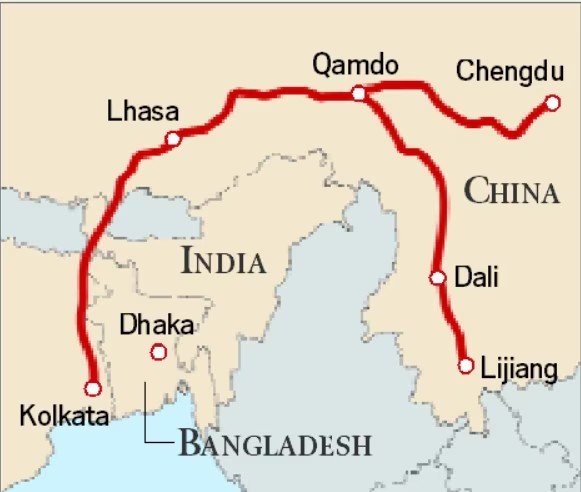Historic Tea Horse Road Linked India, China via Tibet
Why in the News?
China’s Ambassador to India, Xu Feihong, highlighted the historical significance of the Tea Horse Road on X.This ancient trade route facilitated tea exports from China to India and beyond, playing a crucial role in commerce and cultural exchanges for centuries.
Historical Significance & Trade:
- The Tea Horse Road was a crucial trade route spanning over 2,000 km, connecting China to India via Tibet.
- It facilitated tea exports from China to Tibet, then to Kolkata, and further to Europe and Asia.
- Dating back to the Tang Dynasty (618-907 CE), it saw the exchange of sugar, textiles, rice noodles, Tibetan gold, saffron, leather, and medicinal herbs.
- The Song Dynasty (960-1279 CE) established official trade markets to regulate tea and horse exchanges.
- Tea was essential for Tibetan nomads in cold climates, while horses were crucial for China’s military and transportation.
Route & Challenges
- The Tea Horse Road was a network of multiple routes, rather than a single road.
- The two main pathways started in southwest China, passed through Lijiang and Dali (Yunnan Province), and reached Lhasa, Tibet, before branching into India, Nepal, and Bangladesh.
- The route was dangerous, with difficult terrain and elevations up to 10,000 feet.
- Tea bricks were used as currency in medieval Tibet, while Tibetan steeds played a vital role in China’s military strategies.
Modern Developments
- The Tea Horse Road remained significant until the early 20th century, especially during World War II, when it was used to transport supplies.
- With the establishment of the People’s Republic of China in 1949, the route declined due to land reforms and modern transportation.
- China now promotes tourism along the historic route, with Lijiang recognized as a UNESCO World Heritage Site in 1997.





